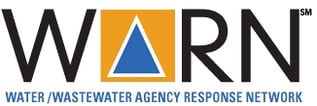When disaster strikes a municipality, it can destroy decades of work on infrastructure and place communities at continued risk for years to come. With the increase in extreme weather events, municipalities need an all-encompassing emergency response plan. Environmental crises can quickly destroy a wastewater system’s integrity, resulting in dangerous conditions for surrounding roadways and homes. This also leads to costly repairs that disrupt annual maintenance requirements and inspection timelines, creating a rippling effect that can disrupt a community for years.
Many municipalities have developed disaster preparedness and emergency response plans to more efficiently protect communities and limit the infrastructure damage caused by both natural and manmade disasters. These plans are usually complex breakdowns of how departmental resources should be allocated and the necessary actions departments should take for different types of disasters. Generally, they cover everything ranging from seismic events to major fires and floods.
Why Develop an Emergency Sewer Plan?
Water and wastewater operations are specialized, requiring experienced and credentialed personnel to ensure the function and flow of municipal sewer systems. In an emergency situation, it's important to know not only the necessary course of action, but also the personnel in charge of executing those actions.
Furthermore, sewer utilities must have the resiliency to self-sustain between the onset of the disaster and the arrival of additional aid. Disaster preparedness for utilities often entails a timeline that addresses core water operations, ensuring that disruptions in service are limited and potential sewer backups are met with a proactive response. People can live safely power, but not without water or the removal of waste, and restoring water services to devastated communities also restores hope in the face of disaster. Having a plan in place to address different types of system failures and the resources necessary to tackle those situations ensures communities are kept safe and sanitary even during a crisis.
Bracing for Potential Sewer Failure
The best way to ensure sewer systems hold up in the face of flooding, fires and seismic activity is by prioritizing resilient infrastructure before a disaster strikes. This may involve more regimented sewer inspection and maintenance protocols, wide-spread rehabilitation of compromised sections, or the full replacement of pipes, as is required for lead pipes in the United States per the recently passed infrastructure bill. 
Most municipalities’ goal is to lay a purposefully-designed sewer system with proper redundancy and collaboration with city planners. While these resiliencies can help soften the impacts of extreme weather and natural disasters, an emergency sewer plan provides more unique, time-sensitive and in-depth protocols to guide even the most panicked wastewater team through emergency response.
Another way municipalities are protecting their communities and infrastructure from disaster is through the use of Water and Wastewater Agency Response Networks (WARN). These networks are designed to support neighboring communities across a given state, providing a protocol for the sharing of information and resources when disasters occur. This may include sharing specialized sewer equipment of which there may only be three units in the state, or simple personnel shifts from unaffected communities to those in need of support.
Schedule a demo of WinCan VX to learn how we’re supporting sewer resiliency and helping utilities prepare and recover from emergency situations:






